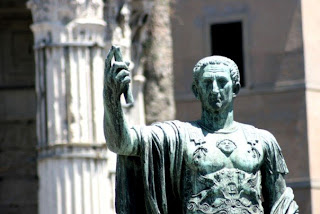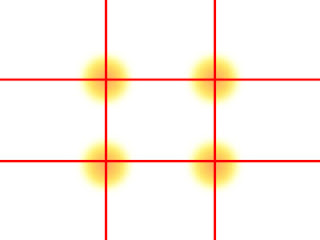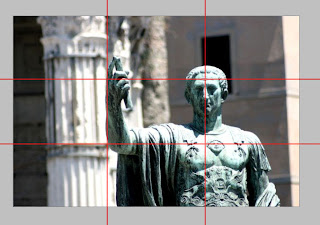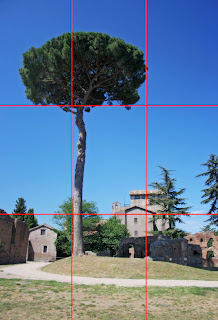The Rule of Thirds

Almost everyone who has picked up a camera has heard of the rule of thirds, but not everyone uses it when composing their photographs. And while some photographers write it off as a trite technique, there's no denying that it can improve your pictures.
The idea is to envision a 3x3 grid when looking through the viewfinder of your camera. Imagine where the grid's lines would cross, and place your subjects at those intersections (like in the grid that follows). In addition, it is a good idea to place any lines (horizons, edges of buildings, etc) along the lines of the imaginary grid.

In doing so, you draw attention to certain points in the picture, while at the same time introducing an interesting, non-symmetrical composition.
I used the rule of thirds to compose this photograph of a statue in Rome, with some ruins in the background. I've put a grid on the picture to show how I used the rule of thirds to create a more interesting picture. Notice how the top right intersection lies in the center of the statue's forehead, the top left intersection lies on his fist, the bottom left intersection is right at his elbow, and the bottom right intersection is very near the center of his chest. Also, notice that I aligned the background column with the left grid line, while the right grid line divides the statue's torso in half vertically.
 In this next example, notice how the tree runs along the left grid line, and the bottom grid line is right by the horizon. Also, notice the intersection of the grid lines where the trunk of the tree meets the branches.
In this next example, notice how the tree runs along the left grid line, and the bottom grid line is right by the horizon. Also, notice the intersection of the grid lines where the trunk of the tree meets the branches.
So next time you're out taking pictures and care about the composition (sometimes you're just taking pictures of friends and in that case it's not a big deal), keep this in mind, and take a few seconds to think about your shot before you take it. Move around a bit to get things to line up how you want them (I had to move until the column was in the right spot in the first picture) and zoom in or out until you find something that aligns with that grid.
It's important to note, however, that this technique is just a suggestion. While it's very useful for quickly composing a shot, it's important to experiment and come up with your own creative compositions.


Comments